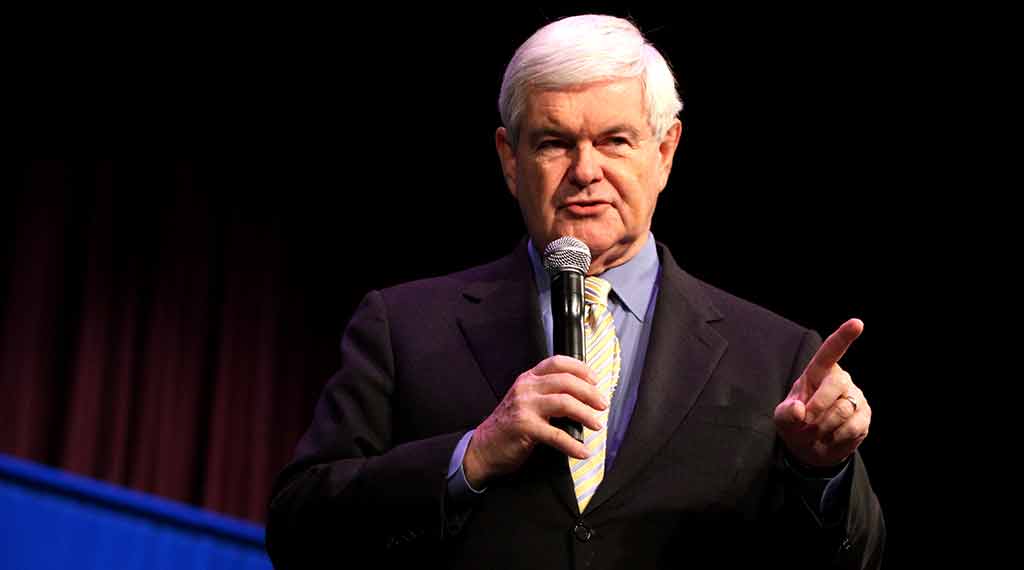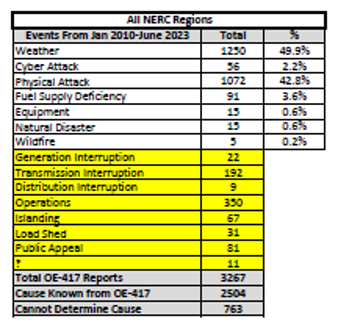Secure the Grid Coalition, along with former Speaker Gingrich, urge federal government to enhance grid security

On September 20, 2023, the bipartisan Secure the Grid Coalition (STG) formally submitted to the Federal Energy Regulatory Commission (FERC) a filing urging them to take immediate action by strengthening the physical security standards for the nation’s bulk electric system.
The filing included a letter from Former House Speaker Newt Gingrich to FERC’s Chairman, Commissioner Willie Phillips, urging the government to re-examine and upgrade the physical security standard.
Gingrich enclosed a previous letter to FERC from March 2020 where Ambassador R. James Woolsey had also recommended the Commission strengthen the physical security standard. Gingrich pointed out that there has been a “lack of substantive action” since those warnings from the former Director of Central Intelligence.
Tommy Waller, Co-Director of STG and Center for Security Policy President, explained the “clear and present danger” physical sabotage presents to the U.S. electric grid. He pointed out that, according to data submitted to the Department of Energy by the electric power industry, physical attack has resulted in electric disturbances in 1,072 cases from January 2010 through June 2023 – a rate of nearly 1.5 attacks per week.
The entire filing can be viewed below.
Click here for a PDF of the filing

Submitted to FERC on September 20, 2023
Our Secure the Grid Coalition respectfully suggests that FERC open a Notice of Proposed Rulemaking (NOPR) to modify NERC Standard CIP-014-3. An upgrade of this standard for physical security of the bulk power system is long overdue. This upgrade should, at a minimum, require that the applicability of the standard to substations be based on the system operating and planning models of Regional Transmission Organizations (RTO), Independent System Operators (ISO), Balancing Authorities (BA), Transmission Operators, and other registered entities. These system models are used in daily operations of these utilities and organizations for system monitoring and generation commitments.
Risks To American Public
The American public is now keenly aware of the clear and present danger to the bulk electric system, and thus their lives and livelihoods, from the risk of physical sabotage. The public need not be engineers or grid experts to be able to see with their own eyes just how vulnerable substations and transformers are to attack. Meanwhile, data submitted to the Department of Energy through OE-417s demonstrates that physical attack has resulted in electric disturbances in 1,072 cases from January 2010 through June 2023 – a rate of nearly 1.5 attacks per week (see below). It is just a matter of time before one or more of these attacks results in a major blackout causing immense economic and physical loss. Meanwhile, over the past nine years since approval of CIP-014-1, FERC has declined to order a fundamental overhaul of this obviously ineffective physical security standard despite numerous formal complaints and petitions.
Additions to Factual Record
The recent Joint FERC-NERC Technical Conference on physical security excluded viewpoints dissenting from industry positions. The lack of debate facilitated nonsensical arguments. For example, NERC and industry panelists exhibited a dualism regarding operating models. As their argument goes, on the “Operations Ledger” the models are vital, but on the “Security/Protection Ledger” the models should not be used to select assets to be protected. Their twisted reasoning says models reliably show which assets, if non-functioning, could lead to uncontrolled separations, cascading outages, or instability—the “evil-three” as they have become known. Yet industry spokespersons argue that they don’t want to use these same models to identify which assets are applicable under the CIP standard. The self-contradiction is obvious.
Industry arguments don’t stand up in the face of basic scrutiny by the public and they certainly don’t stand up in the face of scrutiny by experienced power systems engineers. One such engineer has provided his detailed analysis of the standard as we provide in Enclosure (2).
Enclosure (1) contains a recent letter from our Secure the Grid Coalition co-chairman, former House Speaker Newt Gingrich, to the Chairman of your Commission along with a letter from the former Director of Central intelligence, Ambassador R. James Woolsey – both arguing that your Commission needs to strengthen the physical security standard. We pray that you will do this with haste. Every day that passes without better physical security places the American public in great peril.
Respectfully submitted,
LtCol Thomas J. Waller Jr. (USMC. Ret.)
Co-Director
Secure-the-Grid Coalition
twaller@centerforsecuritypolicy.org
Douglas. Ellsworth
Co-Director
Secure-the-Grid Coalition
doug.ellsworth@usapact.org
OE-417 Data: January 2010 – June 2023


Enclosure (1) Letter Requesting Rulemaking for Upgraded Physical Security Standard for BPS
Enclosure (2) Mike Swearingen Letter with Post-Technical Conference Comments
Enclosures 1 and 2Newt Gingrich by Gage Skidmore is licensed under CC BY-SA 2.0
